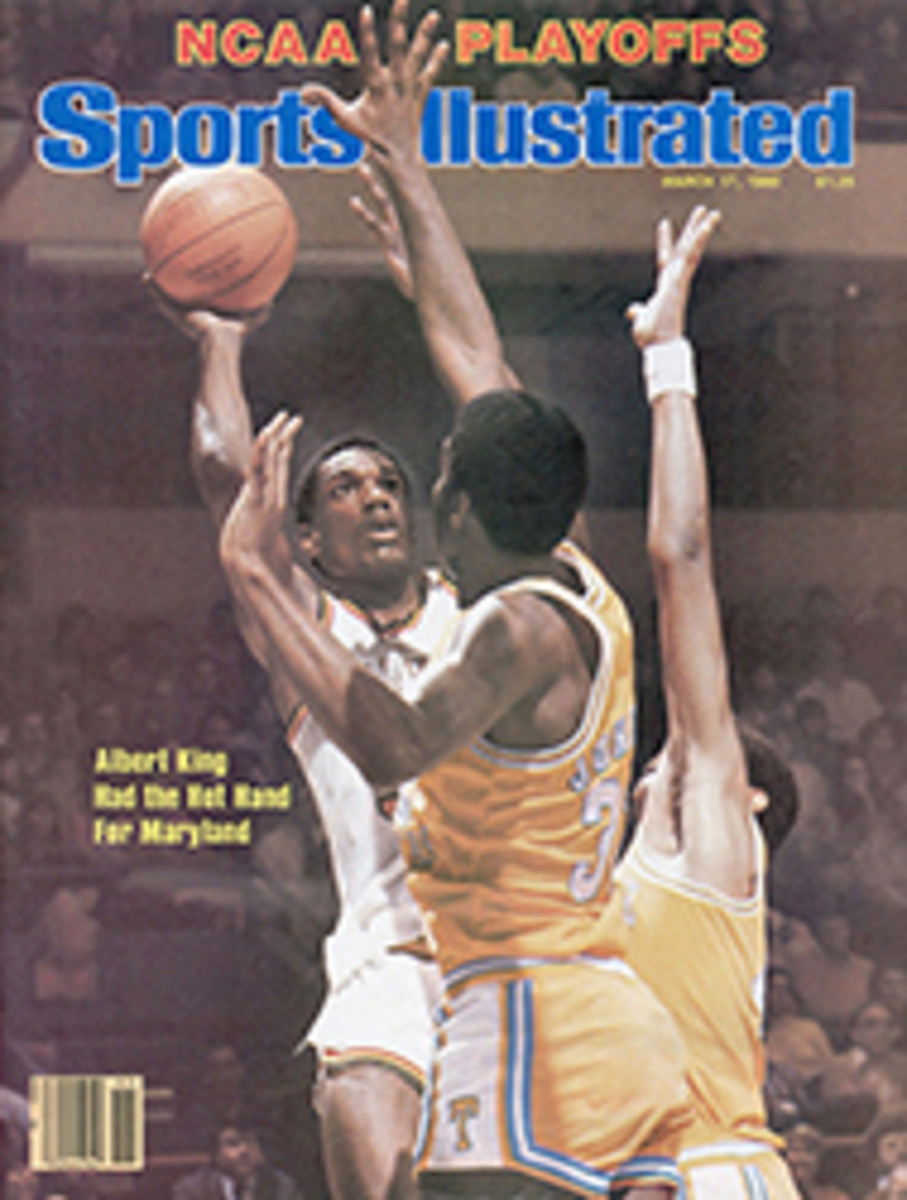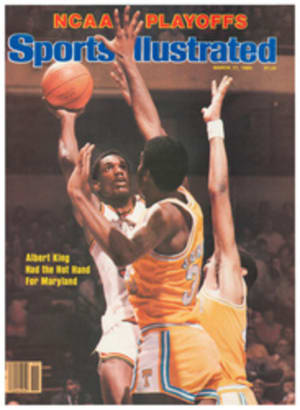
A new light on running
It's hard to think of a sport whose attire has been more sorely neglected by participants and sportswear manufacturers than running. As recently as 1976 most runners spent a lot of time selecting shoes but improvised the rest of their outfits, using cast-off garments from other sports to create getups that were often uncomfortable and inappropriate. Even the traditional "sweats" were inadequate for use as training suits because they didn't allow for proper perspiration evaporation and became sodden when it rained. Truly effective clothing was needed to protect the runner against the elements—not to mention man-made threats to his well-being—and to facilitate the cooling and heating of the body.
That's exactly what designer John Kubiak had in mind when he devised his unique line of running gear. His Seattle sportswear-manufacturing company, G.U.T.S.—an acronym for General Universal Training Supplies—now offers a way to layer clothes scientifically to fit weather conditions. Kubiak's system includes four hi-tech training suits: the Spring/Fall Trainer, the Winter Trainer, the Rain Trainer and the Early Warning suit for running after dark. All are made of lightweight, technically advanced material, some of it originally manufactured for industrial use.
"Sometimes we find a fabric that's just right for sports being used for non-sporting purposes," says Kubiak. Last year, for instance, he discovered the tough but lightweight material for the Spring/Fall Trainer while taking a flying lesson at an Idaho airport. The material, FlannelNyle, was used to cover the windshield of a light plane. "Curiosity led me to ask, 'Why that fabric?' " says Kubiak. "Touching, feeling and looking at the stuff, I realized how soft and supple it was. Then I found out that the tight weave of the Antron nylon outside surface was impervious to bad weather, and the soft brushed cotton on the reverse side protected the plastic windshield from abrasion."
Kubiak soon discovered that FlannelNyle was ideal for running wear. The nylon side is water-repellent and wind-resistant, while the brushed-cotton side absorbs body moisture that can then evaporate through the nylon. In other words: the fabric breathes.
While training near Boulder, Colo. last year, Jim Lillstrom, a marathoner and executive director of the Diet Pepsi road races, encountered the sort of conditions under which the Spring/Fall Trainer is most useful. "I planned an 18-mile run, and because it was warming up, I thought, 'I'll wear shorts so I can get some rays,' " Lillstrom says. "It was one of those Colorado days when the weather decided to take a quick turn—and it was not in my favor. By the time I hit the point of no return, it was snowing. I came down the mountain with the hair on my chest all iced over. The Spring/Fall Trainer is ideally suited for just such unpredictable weather conditions. This lightweight, hi-tech nylon stuff is warm, but if you get too warm, you can wrap it around your waist and it feels like it's not even there."
For cold weather Kubiak offers the Winter Trainer, constructed of a tough nylon taffeta used in down jackets. It is wind-resistant and treated with Zepel to be water-repellent. Moreover, the Winter Trainer jacket has a unique lining. "We put a cotton-polyester mesh on the inside that weighs only four ounces a yard," says Kubiak. "The outer nylon shell weighs about the same, so with about 16 ounces of fabric one can train in freezing temperatures. The mesh acts like thermal underwear, trapping the body heat generated by exercise." And when conditions turn bitter cold, Kubiak suggests wearing the Spring/Fall and Winter Trainers.
The Rain Trainer is made with Gore-Tex laminate (SI, Sept. 18, 1978), which is bonded to a layer of Antron nylon tricot, the soft, lightweight fabric used in women's lingerie. The resulting material is not only waterproof, but it is also wind-proof and breathes.
The most striking creation in the G.U.T.S. collection is the Early Warning suit, an outfit designed for night running. The Early Warning material, developed by Arthur Kahn Co., Inc. in conjunction with 3M, consists of a lightweight, two-ply nylon that has been impregnated with millions of microscopic beads. The beads act like tiny reflective lenses, so that when a car's headlights shine on the fabric, each bead serves as a small but brilliant white light. Occasionally the Early Warning's reflective powers may seem a little too spectacular. Lillstrom says that when photographing the suit one night on a road above Boulder, "All of a sudden cops came flying down on us from all directions. They had had a report of self-immolation on the mountain."
Other sportswear manufacturers are also incorporating the Early Warning fabric into their collections. Both Head and Bill Rodgers have or soon will have outfits made of the material; Marmot Mountain Works in Colorado and Early Winters in Seattle are now turning out saddle bags and handlebar bags for bicycles of the reflective fabric: and the Tenson-Produkter people of Sweden are starting to produce gear made of the Early Warning material to protect sporty Swedes during the long hours of darkness they must endure from November through February.
With such innovative ideas by Kubiak and other sportswear designers, runners may soon be able to forget many of the discomforts of the road and get down to the basics of their sport. Or, as Lillstrom puts it, "We are discovering that by eliminating or minimizing the pain inflicted by the elements, we are free to concentrate on the pain we inflict on ourselves." Well, that's a breakthrough.
PHOTO
Mark Kubiak (left), the designer's brother, and miler Phil Kane shimmer at sunset in Early Warning suits. Kane's has a waterproof Gore-Tex yoke.
TWO PHOTOS
The brothers Kubiak take a run together in a Seattle industrial park. Mark's jacket and shorts are made from FlannelNyle, as is John's Spring/Fall Trainer. At right, Kane trains in the rain in Gore-Tex.
TWO PHOTOS
To keep out the frigid weather, record-breaking runner Mary Decker (left) sports a nylon taffeta Winter Trainer over a Spring/Fall suit. Mary and Jim Lillstrom are wearing the Winter Trainer, Jim having turned his anorak inside out to show the mesh lining that is fully as warm as thermal underwear.

